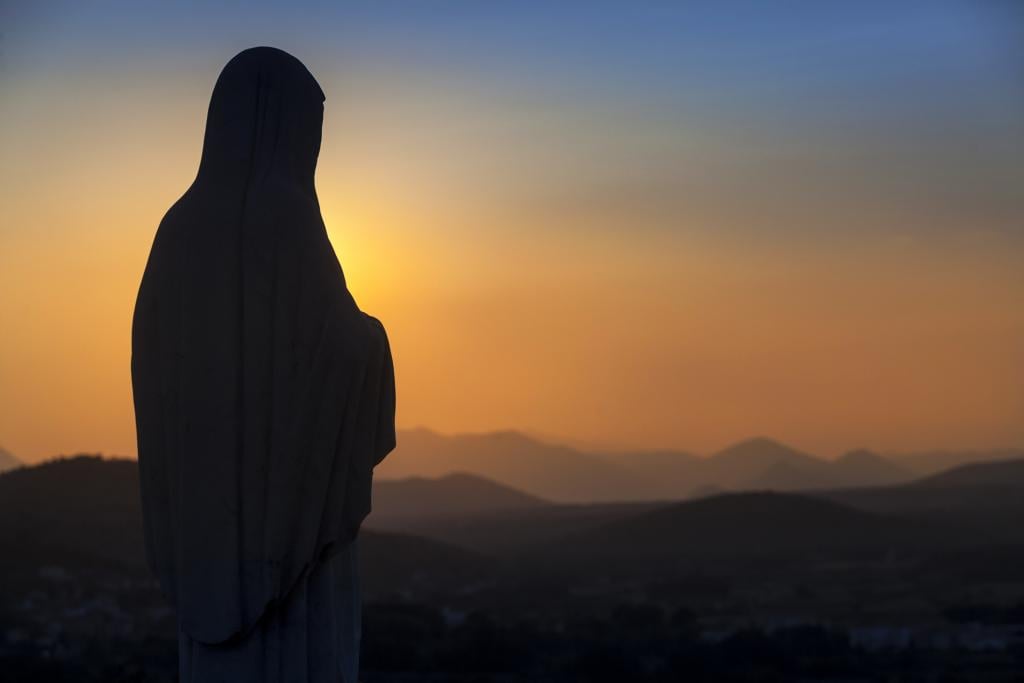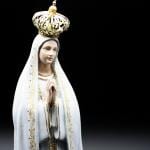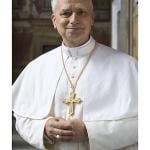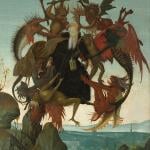
When most people hear the term ‘Immaculate Conception,’ the first thing that often comes to mind is how Jesus was born without Original Sin. At first this seems to make sense, since most Christians who adhere to the Apostle’s and Nicene Creed believe He lived a sinless life. However, the moment Jesus was conceived in the womb is rather known as the Incarnation. The term Immaculate Conception was actually coined by the Catholic Church to refer to the Virgin Mary to emphasize how she was born without the stain of Original Sin — but for a different reason than Jesus was.
Understandably, some would argue that making Mary out to be a sinless woman would somehow imply that she is equal to God or worshiped as a form of goddess. Often when a non-Catholic Christian objects to the teaching, it’s usually stemmed from several misunderstandings.
The dogma of the Immaculate Conception is not explicitly mentioned in Scripture — thus, believed to be false.
A common idea repeated among ‘Bible-only’ Christians is if it’s not clearly found in Scripture it’s not true. Though most Protestant theologians know and understand that a lack of mention in Scripture does not mean an absence of existence or truth. After all, the Bible itself says, “But there are also many other things which Jesus did; were every one of them to be written, I suppose that the world itself could not contain the books that would be written (John 21:25 RSV).” Because most Protestant Christians use Scripture as their final authority, in order for them to grasp that the Immaculate Conception is biblically harmonious, the first thing to appeal to is Scripture itself.
First and foremost, it is important to be aware that terms such as the Trinity are not found in the Bible, yet these terms summarize what Scripture reveals about the nature of God existing in three persons. Protestants also use the word rapture to summarize the Church being “caught up” into Heaven in the end times as described in 1 Thessalonians 4:17. Similarly, the Catholic Church uses the term Immaculate Conception to summarize how Mary was a “highly favored one” or “full of grace” as described in Luke 1:28.
Secondly, every Christian who is familiar with their Bible knows what it says regarding how sin affects humanity, which is shown in passages such as these:
“But we are all as an unclean thing, and all our righteousnesses are as filthy rags; and we all do fade as a leaf; and our iniquities, like the wind, have taken us away.” — Isaiah 64:6 KJV
“As it is written, There is none righteous, no, not one.” — Romans 3:10 KJV
“For all have sinned, and come short of the glory of God.” — Romans 3:23 KJV
“Therefore as sin came into the world through one man and death through sin, and so death spread to all men because all men sinned” — Romans 5:12 RSV
“For the wages of sin is death; but the gift of God is eternal life through Jesus Christ our Lord.” — Romans 6:23 KJV
If verses 10 and 23 from Romans 3 were to be read completely out of context, it would seem that ‘none righteous’ and ‘all have sinned’ would seemingly apply to Jesus if the reader did not already understand He is God. Any biblically-literate Christian would consider other verses for additional context. In which case, we know that the Bible teaches us that Jesus was sinless because of passages such as this:
“For our sake he made him to be sin who knew no sin, so that in him we might become the righteousness of God.”
— 2 Corinthians 5:21 RSV
Adam and Eve were originally created without sin.
Similarly, it is important to be aware that the first humans Adam and Eve were created without sin, but with the capacity to choose disobedience. In which case, the first act of disobedience towards God would be when they chose to eat from the tree of knowledge of good and evil — even after God had specifically told them not to. The fact that sinless humans existed before the fall does not mean it’s impossible for them to exist afterwards, nor does it mean Adam and Eve were equal to God in their sinless state. With that in mind, it is worth noting Scripture says, “With men this is impossible, but with God all things are possible (Matthew 19:26).” It simply means we weren’t created for sin or death. We were created for eternal life.
In Genesis 3:15, we see foreshadowing of the future redemption of mankind mentioned for the first time…
“I will put enmity between you (Satan) and the woman, and between your seed and her seed; he shall bruise your head, and you shall bruise his heel.”
For a woman to be at odds with Satan would mean the complete opposite of sinfulness, which would undoubtedly mean holiness. While Jesus Christ is considered to be the Second Adam (1 Corinthians 15:45), this is one of the reasons why Mary is considered among Catholics and Orthodox Christians to be the Second Eve. Where Adam failed and brought sin into the world, Christ succeed through His death and resurrection and destroyed the power of sin. Where Eve failed to obey God and became complicit with Adam in the downfall of mankind, Mary succeeded (by the grace of God) through her obedience to bear her Son, which resulted in mankind’s redemption. And it is through Christ’s redemption that Creation is freed from the curse of sin.
“For as in Adam all die, so also in Christ shall all be made alive.” — 1 Corinthians 15:22 RSV
“And there is salvation in no one else, for there is no other name under heaven given among men by which we must be saved.”
— Acts 4:12 RSV
Some Christians believe the Immaculate Conception seemingly rejects the uniqueness of God’s holiness and the significance of Christ’s redemptive power
When considering the gravity of sin’s curse, no faithful Christian would want to trivialize the overall seriousness of Christ’s sacrifice on the cross by saying it wasn’t sufficient — but that is not the case with the Immaculate Conception. Non-Catholic Christians sometimes have the impression that the Immaculate Conception was something of Mary’s own doing: that her holiness was something she somehow earned out of her own merit or by simply existing. This is completely false and is not what the Catholic Church teaches. While all humans are believed to have been born with the stain of Original Sin (in which we are saved by virtue of faith and baptism in Christ), the Catholic Church teaches that Mary had been sanctified by God’s grace at the moment of her conception in her own mother’s womb.
“The “splendour of an entirely unique holiness” by which Mary is “enriched from the first instant of her conception” comes wholly from Christ: she is “redeemed, in a more exalted fashion, by reason of the merits of her Son”. The Father blessed Mary more than any other created person “in Christ with every spiritual blessing in the heavenly places” and chose her “in Christ before the foundation of the world, to be holy and blameless before him in love”.” — CCC 492
How could Jesus be Mary’s savior if she was sinless?
But that being said, some would wonder how could God be her Savior if she was immaculately conceived, or why God wouldn’t have kept Mary’s own parents free from sin before her. Or even her mother’s mother, and so on with an entire lineage of immaculate conceptions to maintain a consistent lineage of sinless descendants. But that would logically go all the way back to Adam and Eve, which would render all of humanity sinless and the need for a savior to be completely redundant. Mary’s mother gave birth to her as a human. Mary gave birth to Jesus who was sinless because he is God Incarnate. Mary was sinless because of God’s retroactive grace.
Some would also wonder why Mary couldn’t die on the cross to redeem mankind if she was sinless and lived an obedient life. Though the need to be a sacrificial offering for atonement is not hinged merely on sinlessness alone. The grace of Christ merited on the cross is applied retroactively on Mary, which is reflected more so when she acknowledges God as her Savior in Luke 1:46-47. Christ is able to fully atone for the sins of mankind because He is fully God and fully human. Christ had a body of flesh that came from His mother which, just as Eve had a body of flesh that came from her husband Adam.
Then the man said, “This at last is bone of my bones and flesh of my flesh; she shall be called Woman, because she was taken out of Man.” — Genesis 2:23 RSV
Since Luke 1:28 is a highly disputed passage in regards to Mary being “full of grace,” one could argue that Mary’s womb does not make Jesus pure, since God’s nature cannot be defiled by anything, nor does He require any of these things to become a sinless human incarnation. But as mentioned before, all things are possible with God. Believing in the sinlessness of Jesus is a seemingly outrageous ideology to a skeptic’s mind that requires a level of faith in itself. And one of the passages that drove it home for me is summed up here:
“So, every sound tree bears good fruit, but the bad tree bears evil fruit. A sound tree cannot bear evil fruit, nor can a bad tree bear good fruit.” — Matthew 7:17-18 RSV
The Ark of the New Covenant
In the Old Testament, the Ark of the Covenant had to be made with the purest gold to contain the manna, the rod, and the tablets. Jesus is the fulfillment of all these things. The Ark was holy in a sense that it had to be specially prepared. Only the high priests were allowed to access the Holy of Holies after they were purified and consecrated since it was the embodiment of God’s presence among the Israelites (2 Samuel 6:2, Leviticus 16:2, Exodus 25:22). If someone approached the Ark, they would die as a result of their sins for standing before a holy God who does not tolerate even the mildest evil (Psalm 5:4-6). And just as Jesus is considered to be the New and Everlasting Covenant, His mother Mary is considered to be the Ark of the New Covenant.
How do we know this? By looking at the parallels between the Old and New Testaments, we see in Luke 1:43 when Elizabeth proclaims Mary as the Mother of our Lord, quoting 2 Samuel 6:9 almost verbatim. In another passage, Mary stayed with Elizabeth for three months (Luke 1:56) just as the Ark of our Lord stayed in the house of Obed-Edom the Gittite for 3 months (2 Samuel 6:11). As biblical typology is used to prove Christ is the Messiah foretold and foreshadowed in the Old Testament Covenants, the same method can be used in proving the Catholic dogmas of Mary’s Perpetual Virginity, Assumption into Heaven, position as Mediatrix and Queen of Heaven as well as her Immaculate Conception.
The implication that Mary gave birth to Jesus without labor pains is difficult for many to grasp.
In Genesis, after Adam and Eve had eaten the forbidden fruit, the curse of Original Sin had affected Eve as follows,
To the woman he said, “I will greatly multiply your pain in childbearing; in pain you shall bring forth children, yet your desire shall be for your husband, and he shall rule over you.” — Genesis 3:16 RSV
Because labor pains are traditionally viewed as the result of Original Sin, many find it difficult to believe that Mary would have given birth to Christ without experiencing the physical pain that comes with childbearing. But considering Christ Himself experienced emotional agony in the Garden of Gethsemane and physical suffering during the passion and crucifixion, I would imagine Mary, in spite of being sinless, would have experienced some level of discomfort as a result of her circumstances being born in a world affected by sin.
Skeptics of Mary’s Immaculate Conception would also sometimes question whether Mary went through menstrual cycles since she had to have ovulated in order to give birth to the Son of God. But because Mary was a Virgin when she gave birth to Christ, there would have been no male seed to fertilize the egg. As some atheist skeptics would jokingly say, if it wasn’t a cover-up for premarital intercourse, it could have been the result of some altered genetics in Mary’s DNA causing her to reproduce asexually without any additional chromosomes. But this is what makes the birth of Christ such an unprecedented, miraculous event. I think this is where faith comes in to believe it is the work of a higher power (aka, the Holy Spirit, as much as that may sound like a cop-out answer).
Admittedly, this particular topic is beyond my scope of knowledge and experience since, as a male, it comes without saying that I have not experienced pregnancy. This is also where the focus of discussions becomes quite invasive as it descends into the raw messiness of childbirth and reproductive anatomy. And because I would not discuss the bodily functions of any of the women in my life publicly, I think this is where Christians ought to respect the autonomy of the Mother of our Lord as they would with anyone they know personally. That being said, I recommend fellow Patheos blogger Emily C. Schmitt’s article as she dives into this subject with a unique perspective.
The Immaculate Conception is seemingly a new invention.
The teaching of the Immaculate Conception became official dogma in 1854 under the authority of Pope Pius IX, which would appear to many as a recent invention. But like the doctrine of the Trinity, it is a teaching that dates back all the way to the Early Church. The Immaculate Conception is the natural conclusion of the sinlessness of Mary proclaimed by Council in Ephesus at 431, thanks largely to the contributing works of the Early Church Fathers.
Although development of dogma is a topic worthy of its own article, it is worth mentioning that dogma is defined when it is disputed, not when it comes into existence. For example, the teaching about the Trinity was made dogma in the Council of Ephesus in 431 A.D. (nearly 400 years after Christ walked the earth) during a dispute between Trinitarian Christians and the Arians. There would have been no dispute over the Trinity among the first Apostles because they knew Jesus firsthand. But as the years go by, teaching history and theology can turn into a game of telephone — hence why historic Church councils are held and teachings and beliefs are reiterated and reinforced.
Mary’s Immaculate Conception was not necessary, but fitting.
In the midst of a deadly pandemic, doctors and scientists work to develop a cure for the disease so people may live. This can be allegorical to how the grace of Christ, through His death and resurrection, is the ‘cure’ for those already born with the disease of sin. The Immaculate Conception is more akin to how a vaccine is taken before having any exposure to the disease. Some would say, how could God save Mary if she was already sinless? This would be like asking, how could a doctor save you from disease if he already vaccinated you? Thus, it can be reasonably believed that Mary would have had to been cleansed (or spared) from Original Sin in order to bear the Son of God in her womb.
Mary’s sinlessness would not have been by her own doing, but by God’s saving grace alone. To produce a sinless Savior in her womb, there is no necessity involved with the Immaculate Conception, but it is fitting within the means God chose to come down to earth. God, in His omnipotence, could have been incarnated by any means He desired. He could have materialized into human form on the spot if He chose to do so. But in perfect humility, He entrusted Himself into the arms of a seemingly ordinary Jewish woman — but the fact that He chose Mary specifically to be the Ark of the New Covenant hardly makes her ordinary at all.
O Mary, conceived without sin, pray for us who have recourse to thee!












